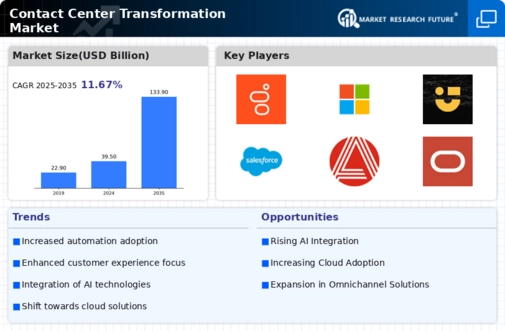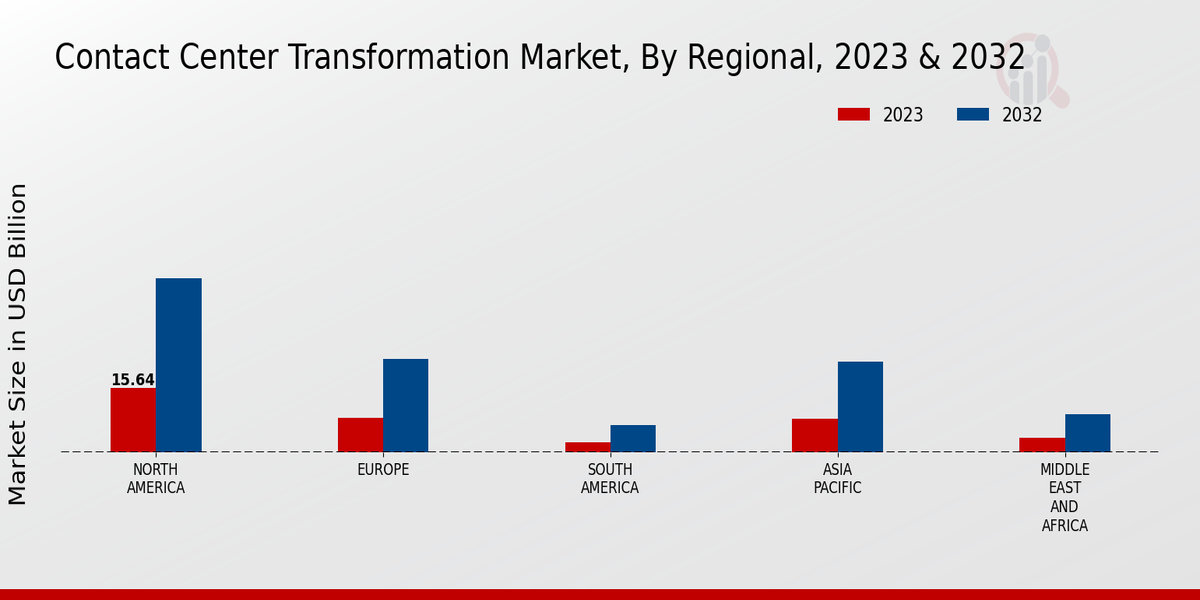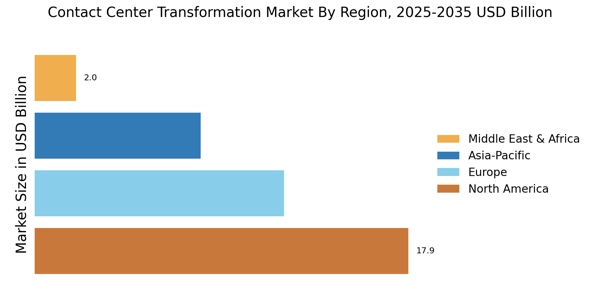Rise of Cloud-Based Solutions
The rise of cloud-based solutions is a pivotal driver in the Contact Center Transformation Market. Organizations are increasingly migrating their contact center operations to the cloud to benefit from enhanced scalability, flexibility, and cost-effectiveness. Cloud solutions allow for seamless integration of various communication channels, enabling a more cohesive customer experience. Recent data indicates that the cloud contact center market is projected to grow at a compound annual growth rate of 25% over the next five years. This shift not only reduces the need for extensive on-premises infrastructure but also facilitates remote work capabilities, which are essential in today's business environment. As such, the adoption of cloud technology is expected to continue shaping the Contact Center Transformation Market.
Integration of Advanced Analytics
The integration of advanced analytics into the Contact Center Transformation Market is becoming increasingly prevalent. Organizations are leveraging data analytics to gain insights into customer behavior, preferences, and trends. This data-driven approach enables contact centers to enhance their service delivery and operational efficiency. According to recent statistics, companies that utilize analytics in their contact centers report a 20% increase in customer satisfaction. Furthermore, the ability to predict customer needs through analytics can lead to a reduction in call handling times, thereby improving overall productivity. As businesses continue to recognize the value of data, the demand for advanced analytics solutions within the Contact Center Transformation Market is likely to grow.
Adoption of Automation Technologies
The adoption of automation technologies is significantly influencing the Contact Center Transformation Market. Businesses are increasingly implementing robotic process automation (RPA) and chatbots to streamline operations and reduce manual workloads. These technologies not only enhance efficiency but also allow human agents to focus on more complex customer inquiries. Recent studies indicate that organizations utilizing automation in their contact centers can reduce operational costs by up to 30%. Furthermore, automation contributes to faster response times, which is crucial in meeting customer expectations. As the demand for efficient service delivery continues to rise, the role of automation technologies in the Contact Center Transformation Market is expected to expand.
Emphasis on Data Security and Compliance
An emphasis on data security and compliance is becoming a critical driver in the Contact Center Transformation Market. With the increasing volume of sensitive customer information being processed, organizations are prioritizing robust security measures to protect data integrity. Compliance with regulations such as GDPR and CCPA is essential for maintaining customer trust and avoiding legal repercussions. Recent findings suggest that companies investing in advanced security solutions can mitigate data breach risks by up to 50%. As data privacy concerns grow, the focus on security and compliance will likely shape the strategies of contact centers, making it a vital aspect of the Contact Center Transformation Market.
Focus on Customer Experience Enhancement
A pronounced focus on customer experience enhancement is driving transformation within the Contact Center Transformation Market. Organizations are increasingly prioritizing customer satisfaction as a key performance indicator. This shift is evidenced by the implementation of personalized service strategies, which aim to tailor interactions based on individual customer profiles. Research suggests that companies investing in customer experience initiatives can achieve up to a 30% increase in customer retention rates. Additionally, the integration of feedback mechanisms allows businesses to continuously refine their service offerings. As customer expectations evolve, the emphasis on enhancing the customer experience will likely remain a central theme in the Contact Center Transformation Market.



















Leave a Comment